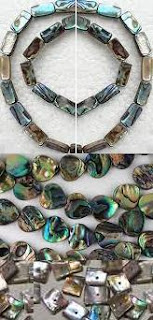 Ham and quick cured ham are going to enjoy brisk selling as always in the coming months since the "ber" months has already set in. December is the peak month for this type of products. This is a small business that anyone can do at the comfort of their homes and communities.
Ham and quick cured ham are going to enjoy brisk selling as always in the coming months since the "ber" months has already set in. December is the peak month for this type of products. This is a small business that anyone can do at the comfort of their homes and communities. How to make Chinese-style ham.
You will need 2 pieces of pork legs weighing 5 kg each. Trim the legs but do not cut off the feet. Prepare the following pumping pickle ingredients.
* boiled water 1 - cup
* saturated salt solution - 4 cups
* salitre - 1/2 teaspoon + 1/8 teaspoon
* oil of cloves 1 drop
* oil of anise - 1 drop
* maplein - 2 drops
* Phos PT - 2 1/2 tablespoons
Dissolve the dry ingredients in a small amount of salt solution before mixing with the rest of the liquid. Then, stir thoroughly and strain the mixture. Now, prepare the following dry-cure mixture ingredients:
*refined salt - 3 tablespoon
*sugar - 1 tablespoon
*salitre - 1/16 teaspoon
Mix the three ingredients well. Then, with the use of syringe, inject the pickle into the lean portion, that which is closest to the joints and nearest to the bones. Use 1/2 cup of pickle solution for every kilogram of meat. With light pressure, massage the legs to distribute the pickle.
Apply the dry-cure mixture on the skin side and on the fleshy portions of the legs. Place them on wooden racks. Then, keep inside the middle portion of your refrigerator. on the 15th day, rub the dry cure mixture (this time without salitre) on the pork legs. Store again inside the refrigerator for 15 days.
After 15 days, take out from cold storage and soak in warm water, scrub to remove excess salt. Tie the leg at the joint portion with abaca twine or lubid. Dry for seven days in an artificial dryer maintaining the temperature at 110oF until dried. An artificial dryer is a chamber equipped with heating elements maintained at temperature of 110oF to 120oF and relative humidity of 85 per cent. Products dried here give better quality meat than those dried under the sun.
If you want to age the ham, store it in a clean and well- ventilated but screened room.
How to make Quick-cured ham.
To prepare this type of ham, you will need 1 to 3 kg of hindleg or shoulder meat. Prepare the following pumping pickles ingredients.
* salt-2 1/2 cups
* boiled water - 2 1/2 cups
* salitre- 1/2 teaspoon + 1/8 teaspoon
* Nitrate - 1/2 teaspoon + 1/16 teaspoon
* sugar - 2 1/2 tablespoons
* oil of anise - 1 drop
* oil of cloves - 1 drop
* ascorbic acid (500 mg)- 5 tablets
* Maplein - 2 drops
* Phos PT - 2 1/2 tablespoons
* Smoke flavor - 1 teaspoon
Mix all dry ingredients first in small amount of salt solution before mixing it with the rest of the liquid. Stir thoroughly and strain. Prepare the following dry-cure mixture (for every kg of meat):
*Salitre- 1/16 teaspoon
*ascorbic acid - 1/2 tablet
*phos PT - 1/4 tablespoon
Mix these ingredients well. Then, for approximately 1 kg of meat, inject 1/2 cup of pickle. Next, apply the dry-cure mixture all over the meat. For a quick ham, cure the meat in a well- ventilated but screened room for 8 hours. If you want to cure it for one week, store in the refrigerator for 7 days. But if you prefer to store the meat for two weeks, repeat the application of dry mixture (2 1/2 teaspoon of salt and 1 1/2 teaspoon sugar) on the 7th day before storing it again in the refrigerator.
After 15 days take it out from cold storage and wash. Drain, then roll and tie with a piece of rope or lubid. If you will not cook it immediately, store in refrigerator.
How to cook ham.
Wash the ham with clean water to remove excess salt. Cut off the leg of the Chinese-style ham and par- boil (boiling for about five minutes) in water. This is done before final cooking to further remove excess salt. Change the water for final cooking. Quick-cured ham needs no parboiling. Prepare these spices (good for every 2 kg of meat).
white sugar - 1/2
brown sugar - 2 cups
beer - 1 bottle
laurel leaves - 2 pieces
a few leaves of oregano
Submerge ham in water and add the spices. Cook for 2 1/2 to 3 hours over a low fire. The skin separates from the fat when the ham is already cooked. Cover the fat side with brown sugar. Remove the skin of the Chinese-style ham before rubbing the brown sugar. Then, caramelize the sugar using a hot iron Sianse.
Source: DOST, photo courtesy of www.theallineed.com


